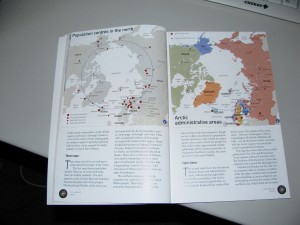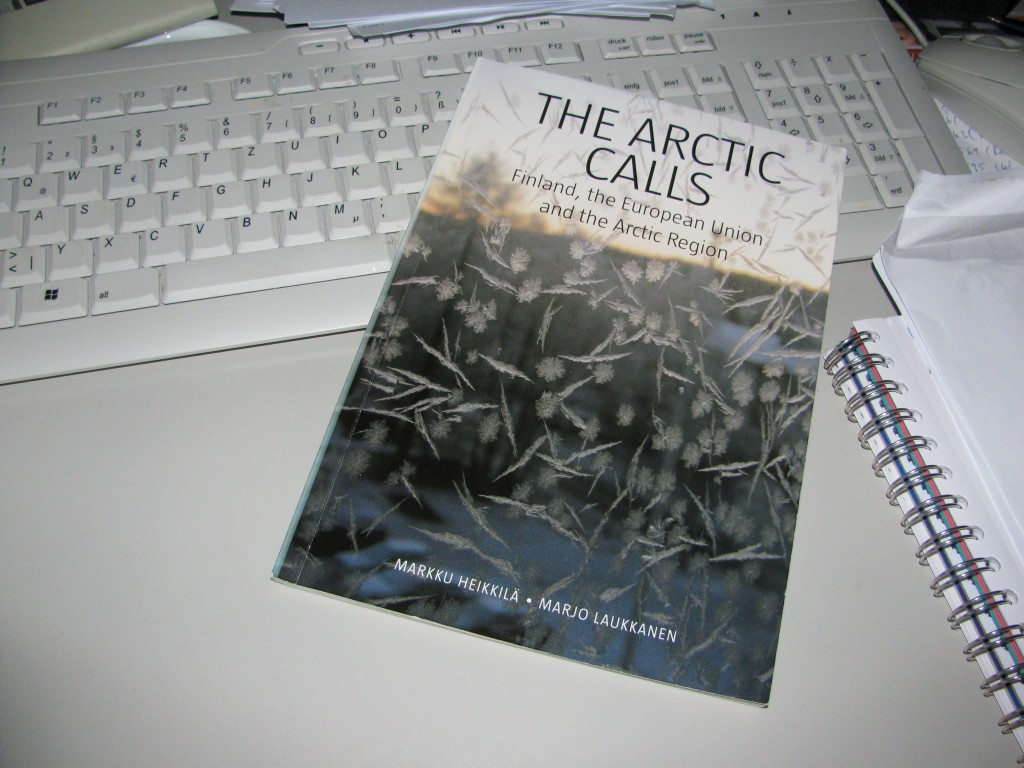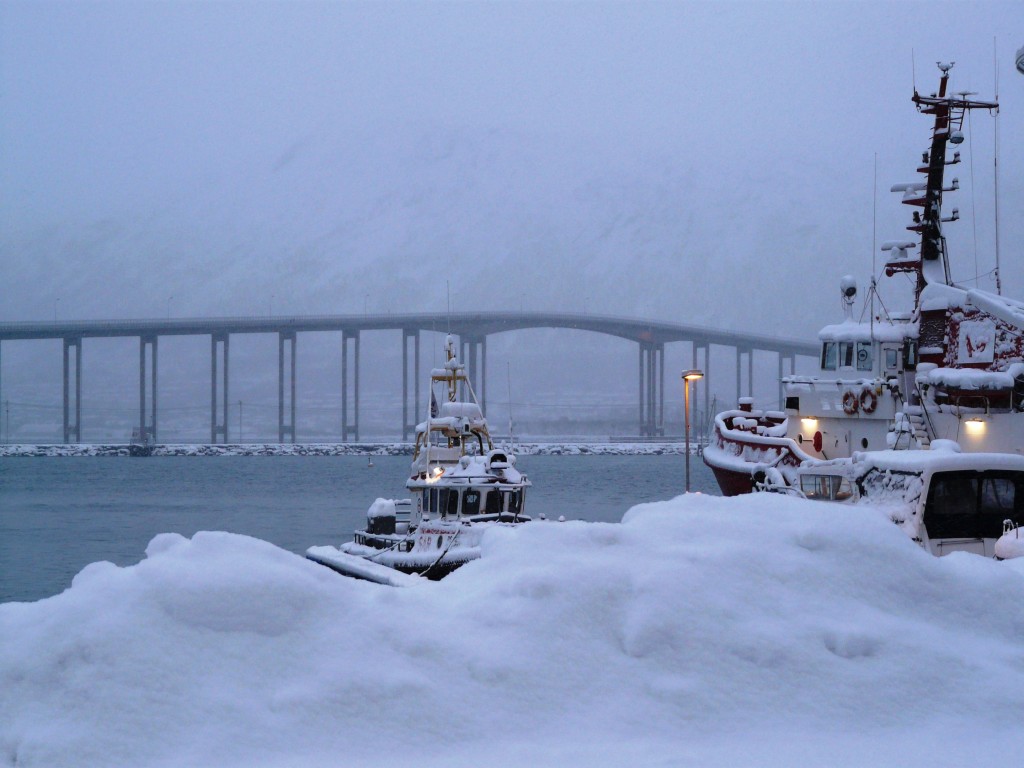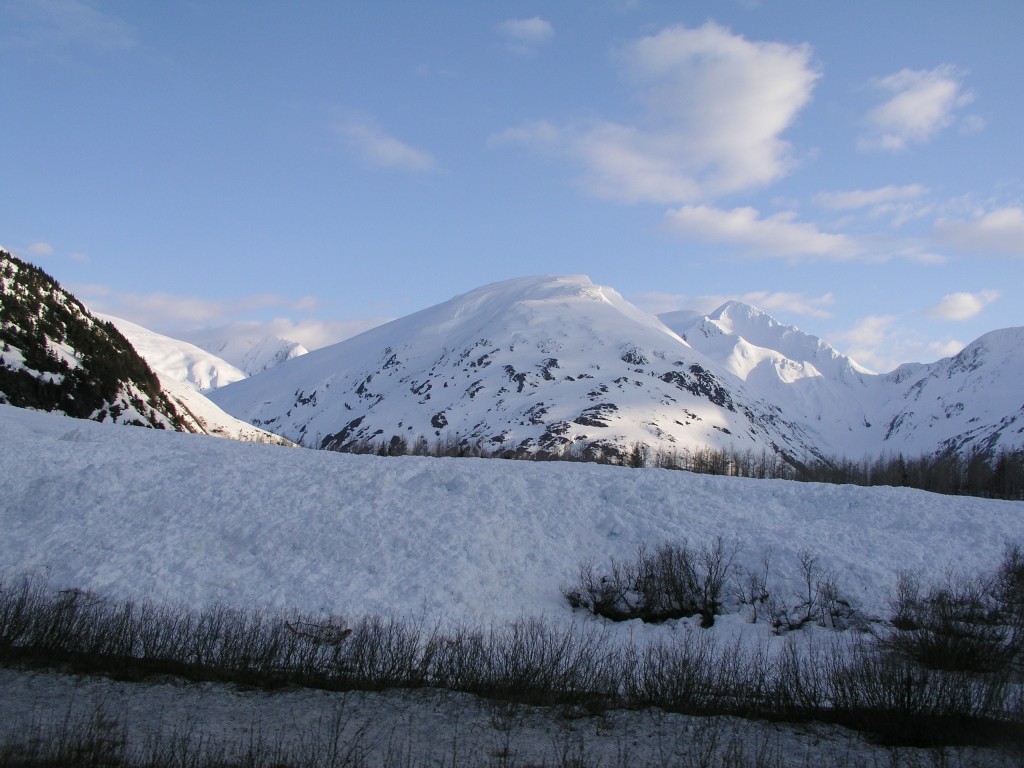4 Search Results for: Rovaniemi
Rovaniemi: Finland and the Arctic
Rovaniemi is where I would like to have spent the last few days. From Dec. 2nd to 4th, the first of a series of Arctic conferences was held there, organized by the city of Rovaniemi and the Arctic Centre of the University of Lapland.
Rovaniemi, a Finnish town right on the edge of the Arctic circle, is known to “Arctic buffs” because of the “Rovaniemi Process”, a Finnish initiative for Arctic environmental co-operation, which ultimately led to the adoption of the “Arctic Environmental Protection Strategy”, signed in Rovaniemi in 1991. This in turn played an important role in the establishment of the Arctic Council
In the spirit of that “Rovaniemi Process”, the city and the University’s Arctic Centre decided to organize a series of conferences, this being the first one. Finland, like all the northern states, is trying to assert its position in the region against the background of climate change and growing international interest.
Earlier this year, I received a copy of a very useful booklet produced by the Arctic Centre of the University of Lapland. It’s entitled “The Arctic Calls. Finland, the European Union and the Arctic Region“. The authors are Markku Heikkilä and Marjo Laukkanen, both based at the Arctic Centre. Its aim is to “put a human face on the Arctic Region”, and it does that very well, looking across the whole region. President Sauli Niinistö wrote the foreword to the publication. He mentions Finland’s initiative to establish an EU Arctic Information Centre in Rovaniemi, which I am following with interest.

Useful maps and info on the Arctic and its peoples
The European Union Arctic Information Centre (EUAIC) initiative is an international network of 19 leading Arctic research and outreach institutions from the various European Union Members States, and the EEA countries. It was started in 2009 as a professional network of European institutions aiming to provide information, outreach and insight into Arctic issues. The network’s objective is to provide the European Union, its citizens, institutions, companies and member states with a reliable source of information on what is happening in and concerning the Arctic. The EUAIC initiative network aims to “facilitate two-way communication between experts, decision makers, stakeholders and the public”, according to its website.
The initiative is organized as a network, making use of existing expertise and the infrastructures of its members. Its headquarters are located at the Arctic Centre in Rovaniemi. Currently there are nineteen partners. The European Commission selected the consortium to carry out a key one million euro project to produce a “Strategic Environmental Impact Assessment of development of the Arctic”. The project should be completed in 2014 and should make for interesting reading.
Bearing all this in mind, it’s worth keeping an eye on what comes out of the Rovaniemi conference. And I’d recommend the publication, “The Arctic Calls”, ISBN 978-952-281-065-6. It has interesting interview, maps, photos and insight. You can also get it from the Arctic Centre or download an online version.
Let me just finish by quoting from the final pages:
“The images of icebergs drifting out to sea have turned from symbols of freshness to symbols of disappearance. They have become images of a unique world that is undergoing drastic change and is about to lose many of its characteristics.” How right you are.
Norway focuses on “Humans in the Arctic”
With the Annual “Arctic Frontiers” conference in Norway’s “Arctic capital” Tromsö looming large on the horizon from January 19th to 24th, I was interested to see that the conference theme of “Humans in the Arctic” was the subject of an event held by the North Norway European Office in collaboration with The Arctic Institute and Maritimt Forum Nord.
Those of us who are too far away to be able to drop in to seminars like this ahead of the big event can thank Kathrin Keil and Andreas Raspotnik from the Arctic Institute for keeping us up to date with a short report summarizing the event.
It is not surprising to see an increase in the number of conferences and seminars on Arctic development, given the climate-change related changes to the region which feature here on the Ice Blog. I have the sense that there is considerable competition between different Arctic players on all levels to become the focus of development activities.
In the event report, Raspotnik and Keil refer to the “Tromsö High North Cluster”. According to Anne Husebekk, the rector of the University of Tromso (UiT), as quoted in the paper, “The Tromsö High North Cluster can play a crucial role in providing the necessary knowledge for sustainable development in the Norwegian Arctic”. On my visits to Tromsö, I certainly had the feeling that people were working hard at this.
In my last blog post I mentioned the campaign underway to establish an EU Arctic Info Centre in Rovaniemi in Finland.
Understandably, all the Arctic states are keen to have a large chunk of the cake and stress their own expertise and infrastructure. But in an area like the Arctic, international cooperation is clearly essential.
Oil and gas drilling and increased shipping are usually the first issues that come to mind in connection with Arctic development, with all the safety, logistic and environmental challenges they bring with them. But the High North is also a key area for fishing, an activity which may not exactly benefit from extended industrial or commercial activity, not to mention the pressures from climate change. One point that attracted my attention in the conference report was a presentation by Trygve Myrvang, Managing Director of the Norwegian Fishermens Sales Organization, looking at the sustainability of fish stocks in the Norwegian North and factors affecting it. “Myrvang underlined the necessity of cooperation between the fishery and energy industry in the High North, both interested in the same offshore areas, say Raspotnik and Keil.” Indeed. Interesting times ahead. And plenty of scope for discussion at Arctic Frontiers. The Arctic Institute will also be holding a side event on “infrastructure-related challenges in the Arctic”. There is certainly no shortage of those. I hope I can be there to join the forum.
Greener Arctic will speed up warming
New research predicts that rising temperatures will lead to a massive “greening” or increase in plant cover in the Arctic. In a paper published in Nature Climate Change on March 31st, scientists present new models projecting that wooded areas in the Arctic could increase by as much as 50 percent over the next few decades. They also show that this will accelerate climate warming at a faster rate than previously expected.
In the Ice Blog post of March 11th, A Greener Arctic in a Warmer Climate, I wrote about a study of satellite data showing there have already been considerable changes, with plants growing further north and reaching higher heights than previously in their present locations. The new work, funded by the National Science Foundation, models how the “greening” of the Arctic could continue and what effects it could have.
Richard Pearson, the lead author on the paper and a scientist at the American Museum of natural History’s Center for Biodiversity and Conservation says “such widespread redistribution of Arctic vegetation would have impacts that reverberate through the global ecosystem”. Once again, we have a piece of research demonstrating the worldwide significance of what is happening in the far north of the planet.
The models suggest there could be trees growing hundreds of miles north of the present tree line in Siberia. As well as changing living conditions for flora and fauna, the researchers draw particular attention to the feedback effects which would be produced by having a green rather than a white Arctic. The albedo effect would have the greatest impact, they say. The white snow reflects most of the radiation back to space. “Dark” areas, on the other hand, in this case trees or shrubs, would absorb more sunlight, leading to a further increase in temperature. For the Arctic, that would mean “the more vegetation there is, the more warming will occur”, according to the study. It is the same phenomenon observed when the increased melting of the sea ice gives way to darker water, which absorbs more heat.
You might wonder if the plant growth could offset this warming effect by absorbing atmospheric carbon. But this process happens too slowly for that, says co-author of the study Michael Loranty, from Colgate Unversity.:
“By incorporating observed relationships between plants and albedo, we show that vegetation distribution shifts will result in an overall positive feedback to climate that is likely to cause greater warming than has previously been predicted”, according to Wood Hole Research Center Senior Scientist Scott Goetz, another co-author.
The temperature in the Arctic is already rising at about twice the global rate.
A greener Arctic in a warming climate
A new study of thirty years of satellite data shows considerable changes to the Arctic tundra. The difference between the seasons is diminishing, resulting in increasing plant growth and a less clear distinction between North and South. Vegetation is moving northwards as climatic conditions shift.
The study, conducted by an international team of 21 researchers from 17 institutions in 7 countries and funded by NASA is published in Nature Climate Change. Professor Bruce Forbes from the Arctic Centre of the University of Lapland in Rovaniemi, Finland, one of the authors, says indigenous reindeer nomads in northern Russia are already experiencing increases in the height of deciduous shrubs.
Although conditions differ in different parts of the region, overall the growing season is beginning earlier and the autumn freeze starting later.
Climate News Network quotes Professor Forbes as saying “we are seeing more frequent and longer-lasting high pressure systems. In winter, the snow cover comes later, is deeper on average than in the 1960s, but is melting out earlier in spring”. Forbes and his research team used dendrochronology, the science of tree-ring measurement to confirm the findings.
“In a few decades, if the current trends continue, much more of the existing low shrub tundra will start to resemble woodlands as the shrubs become tree-sized”, says Forbes.
The warming will change ecoystems considerably and also result in “feedback” effects. Melting permafrost means peat and vegetation will decompose, releasing methane and carbon dioxide into the atmosphere.
Let me close with “food for thought” from Tim Radford, the author of the Climate News Network report on the study:
“Climate is a complicated business, and there is always legitimate room for argument about the validity of one selected set of measurements, a potential bias in the observations, or the reliability of comparison data collected two generations earlier. But vegetables can’t be fooled. Plants grow where they can. If deciduous shrubs are growing taller, and colonizing sites ever further north, then conditions must be getting warmer, and staying warmer.”
It’s hard to argue with that.




















Feedback